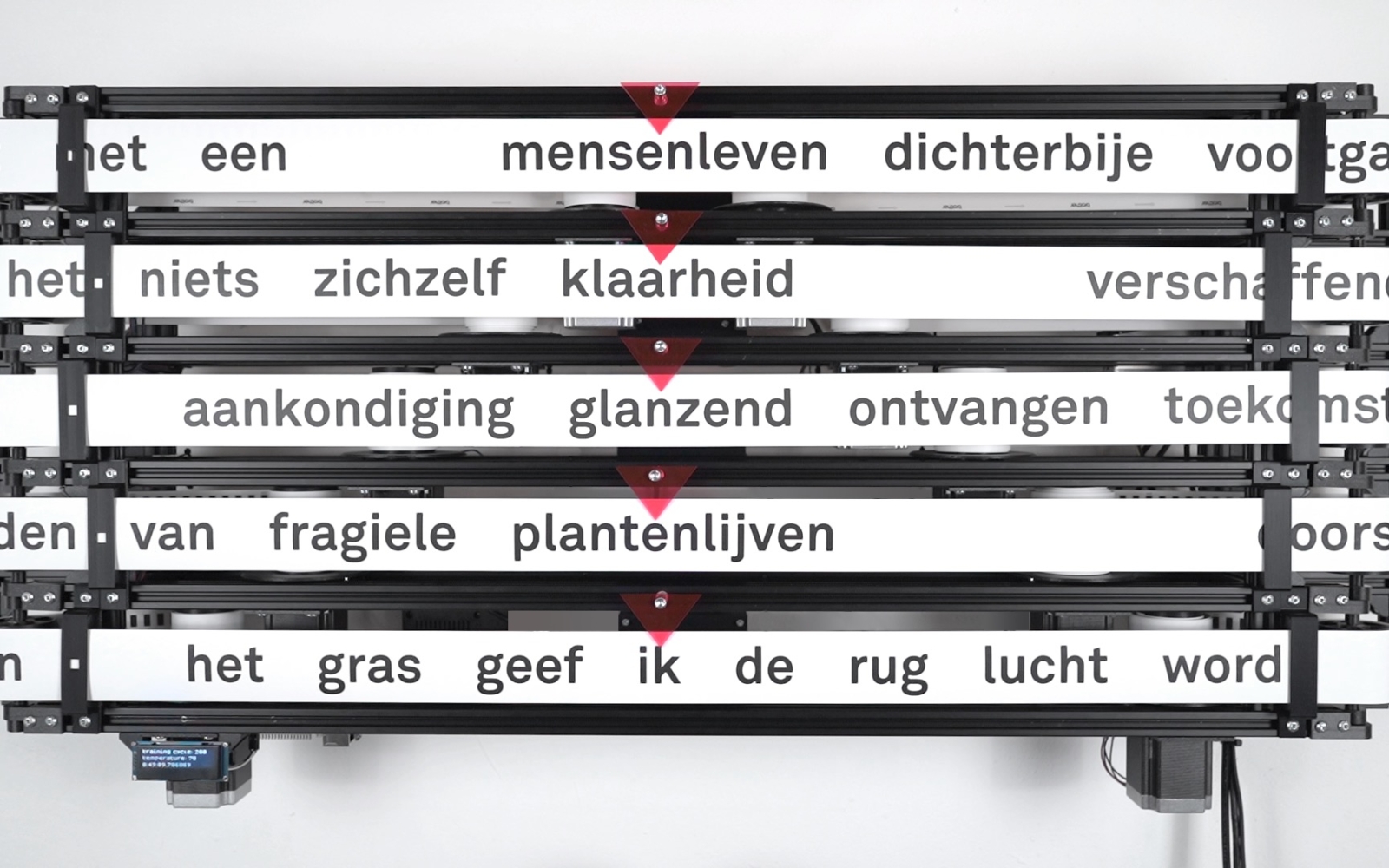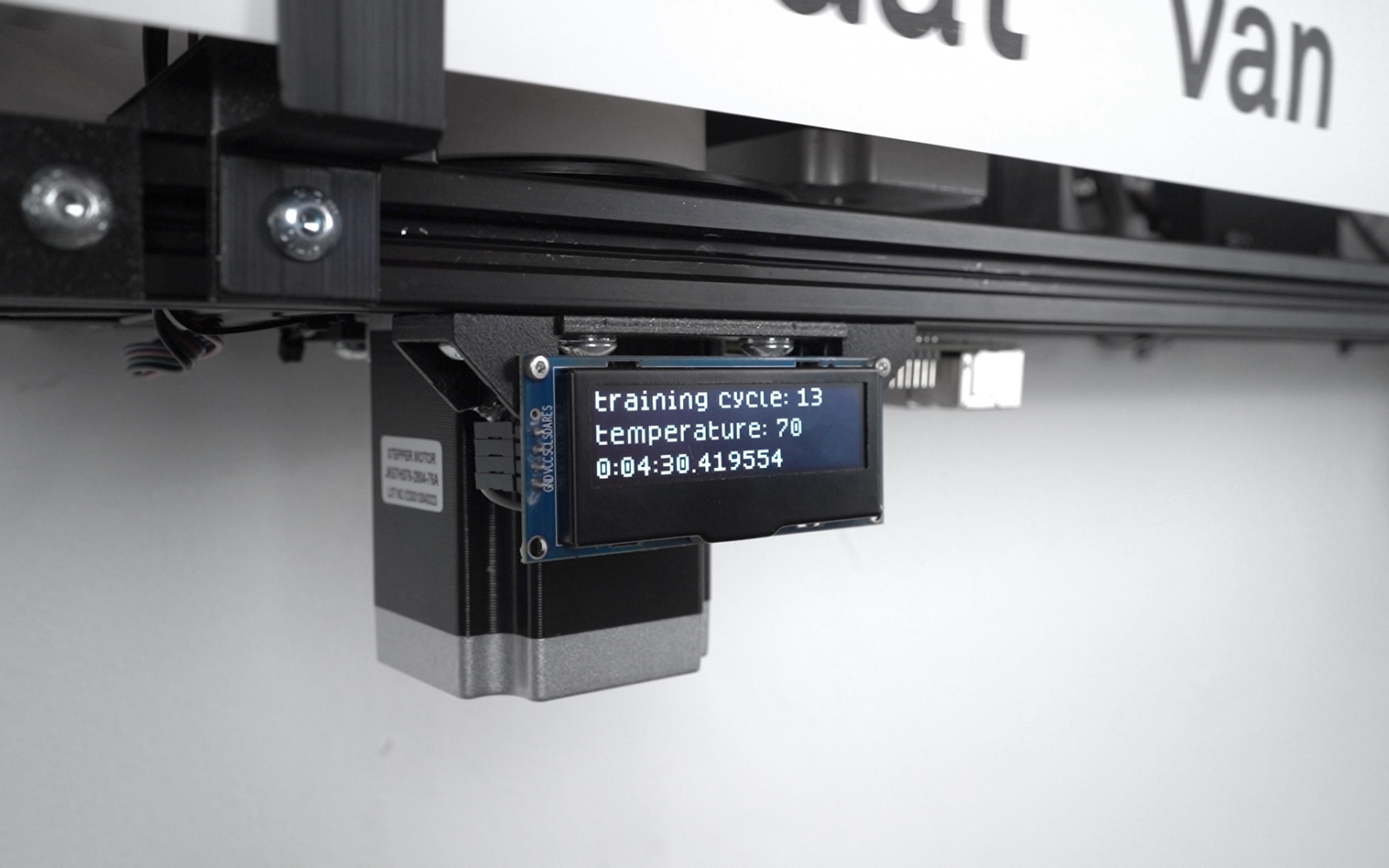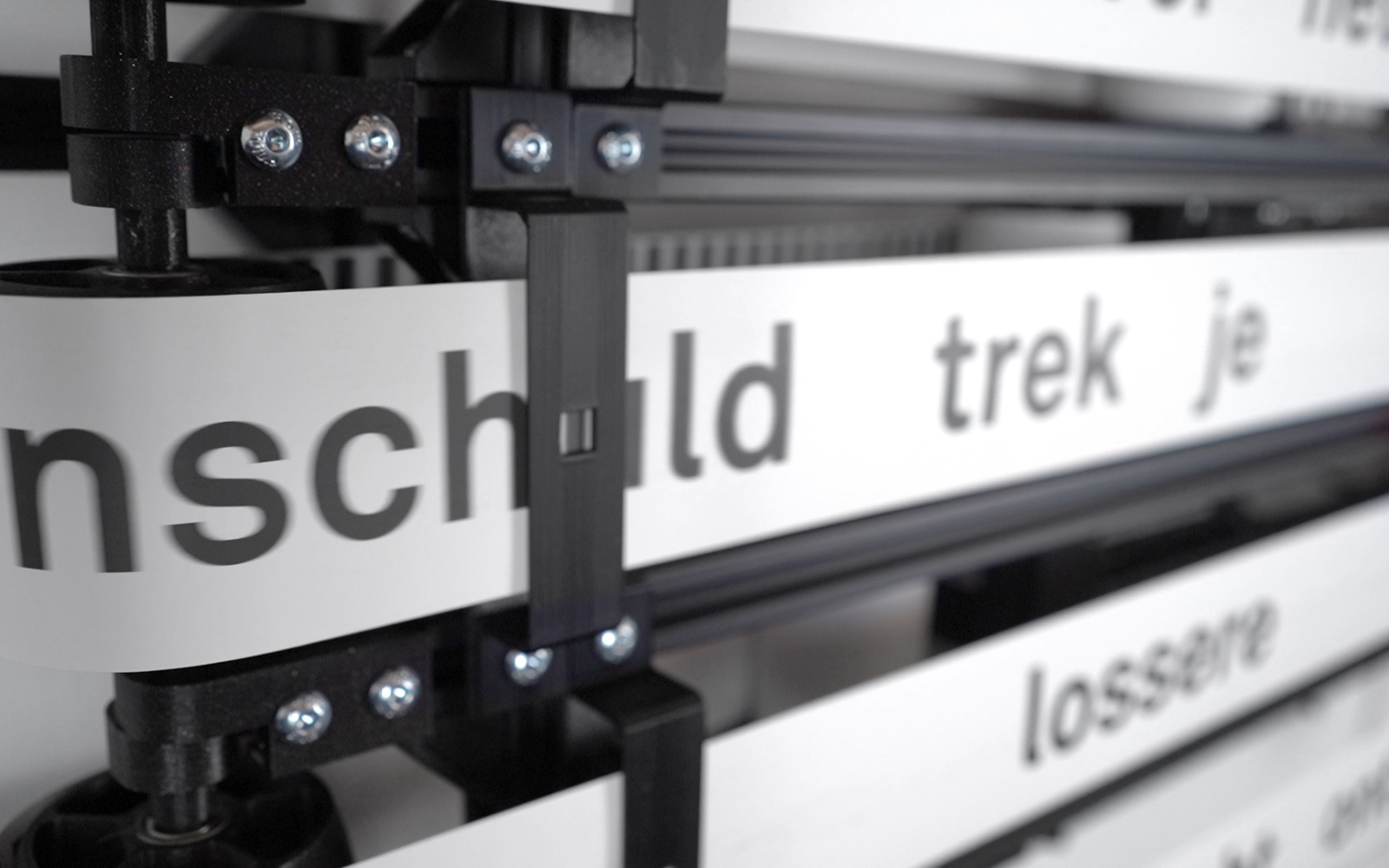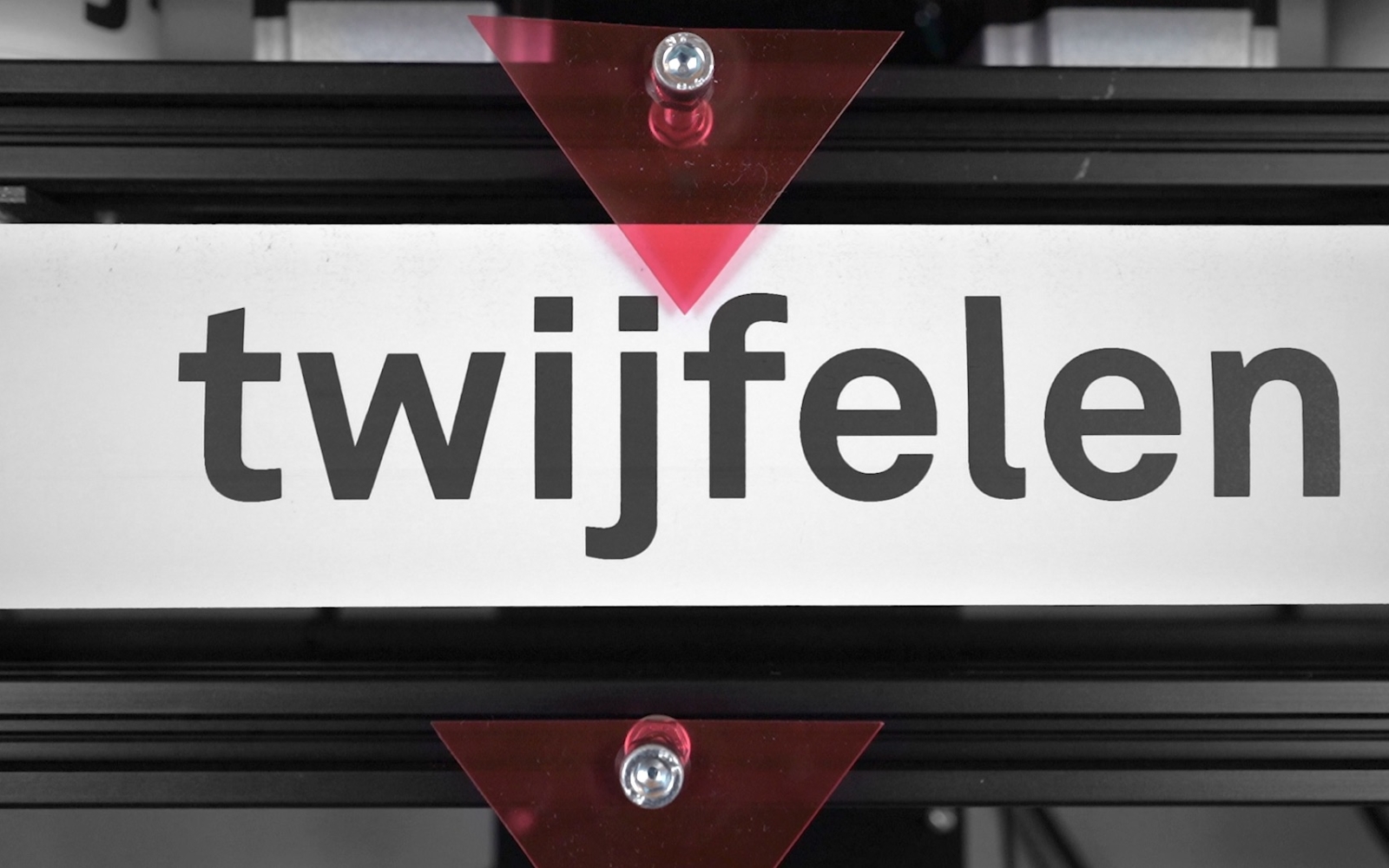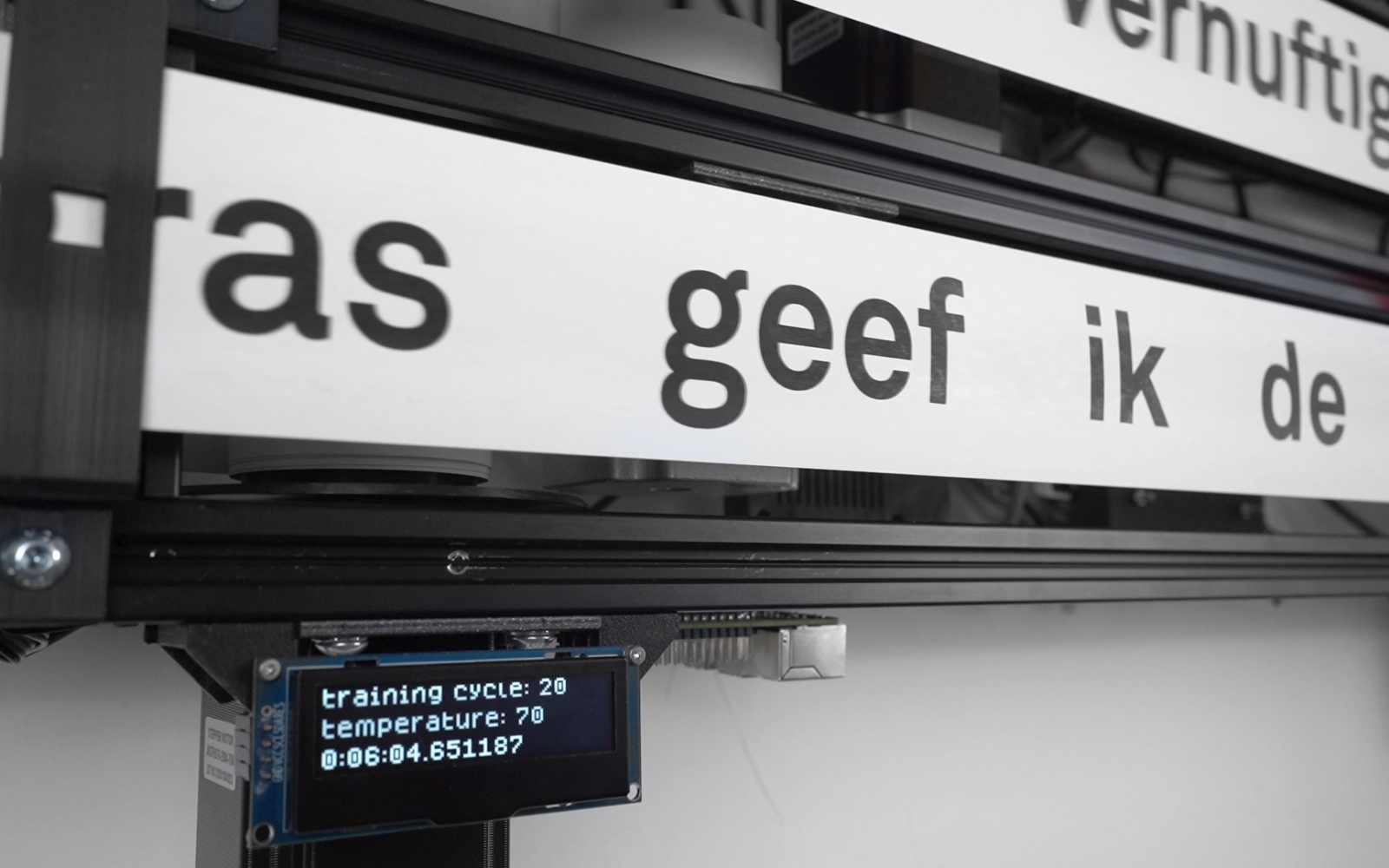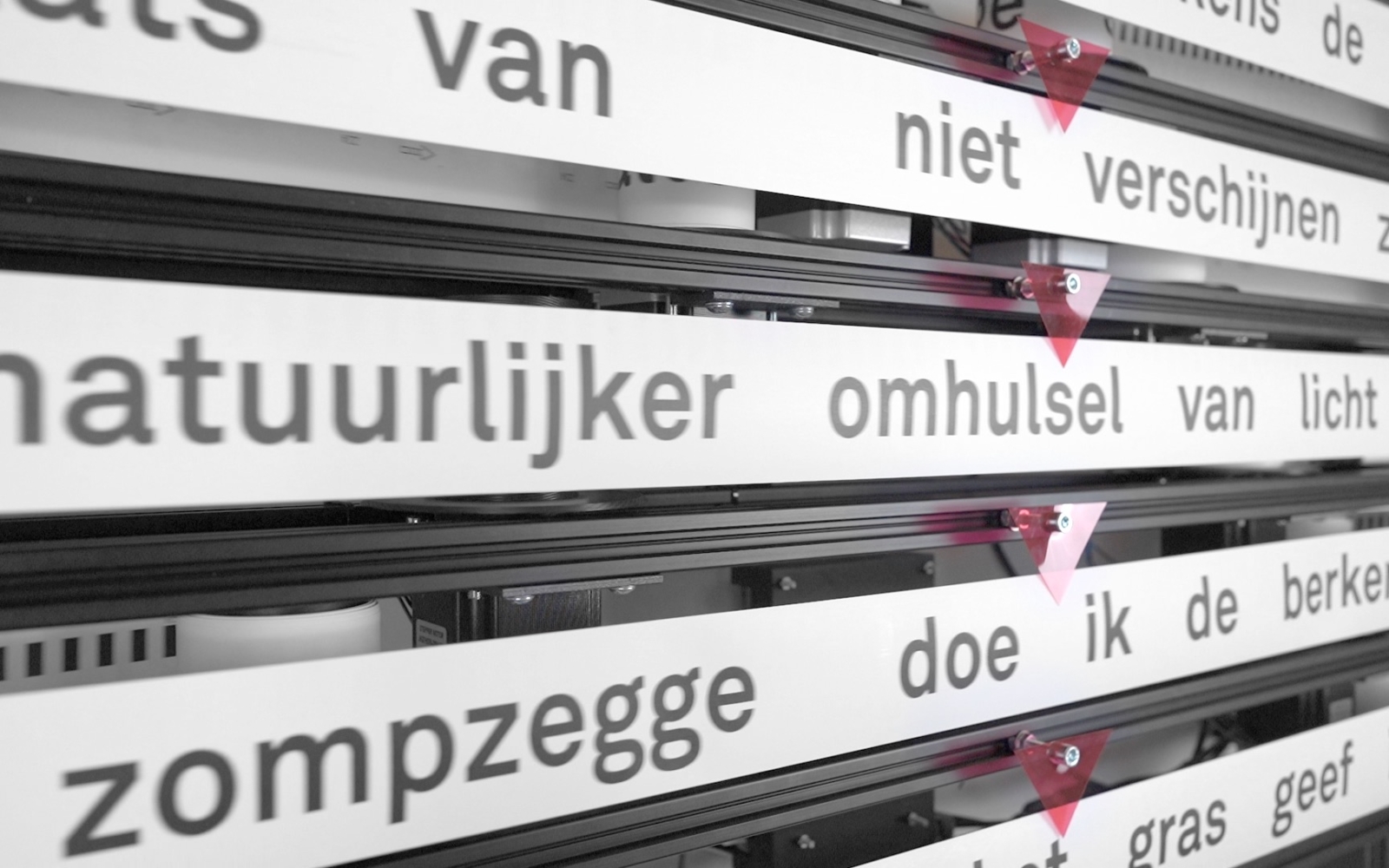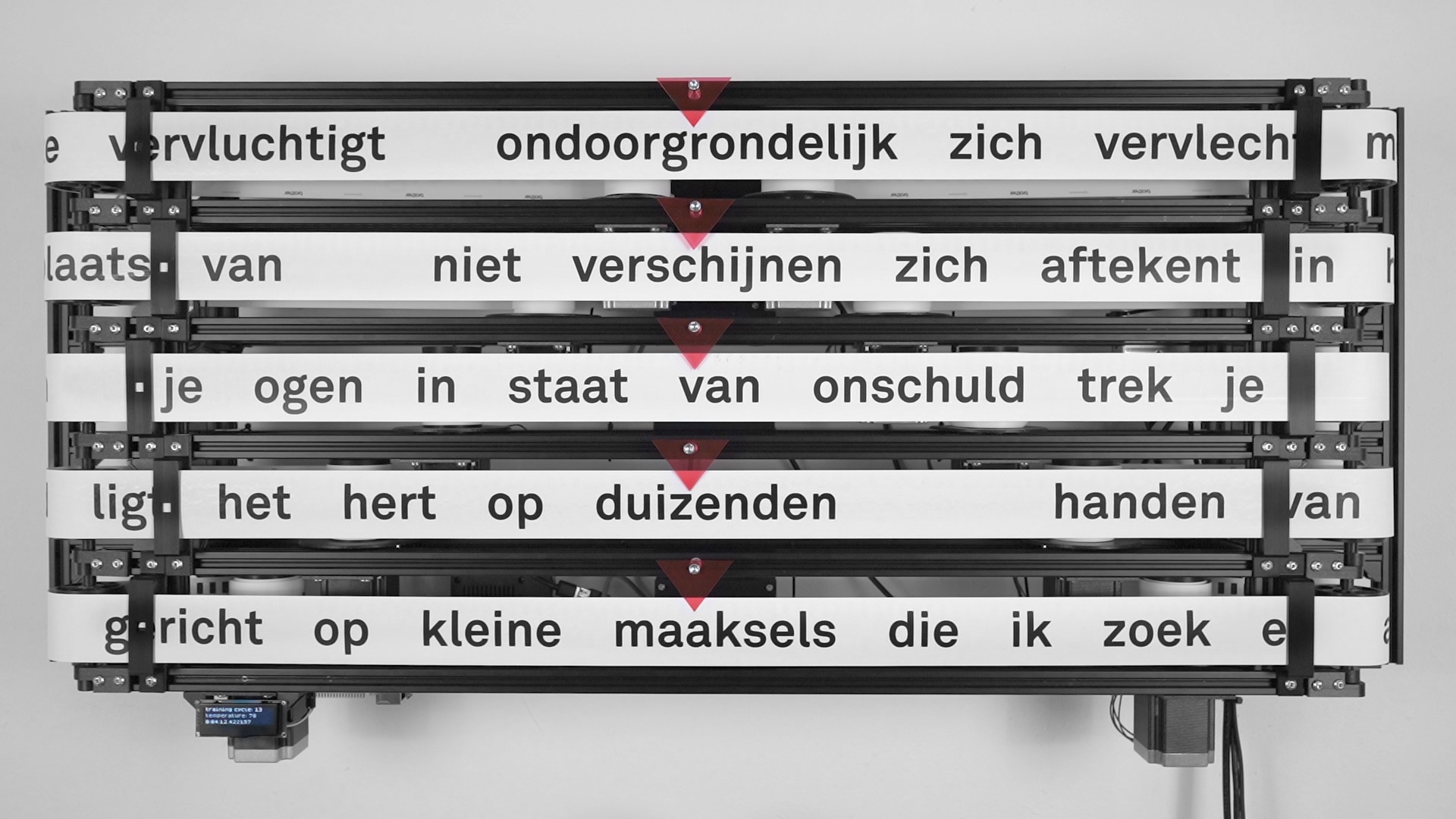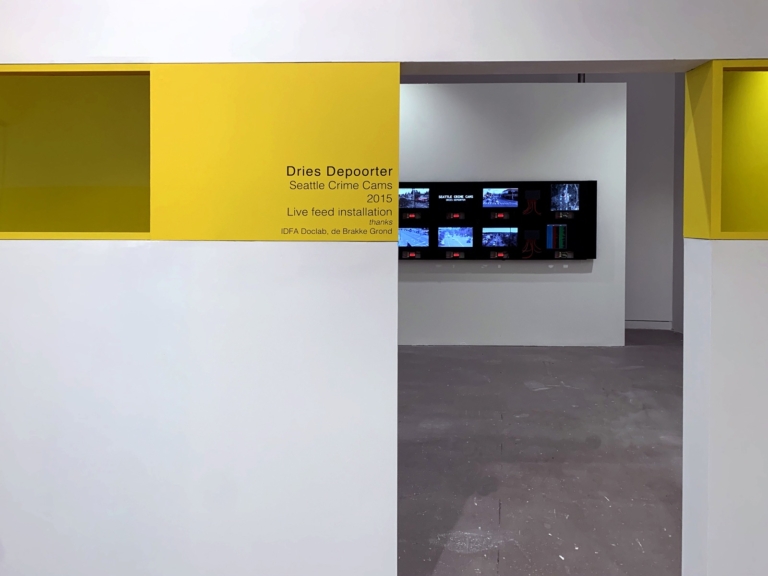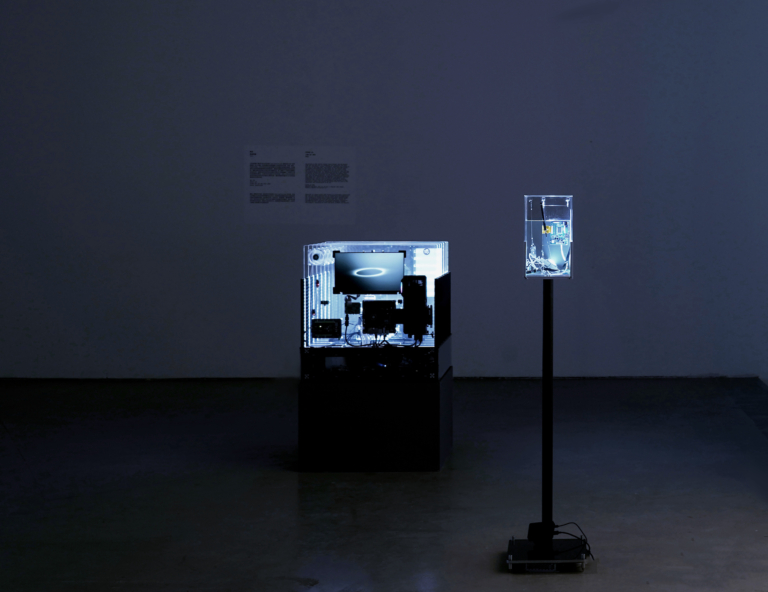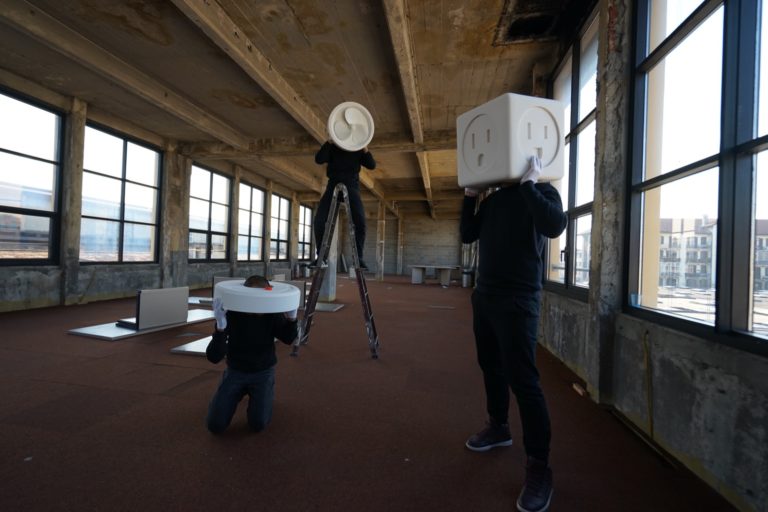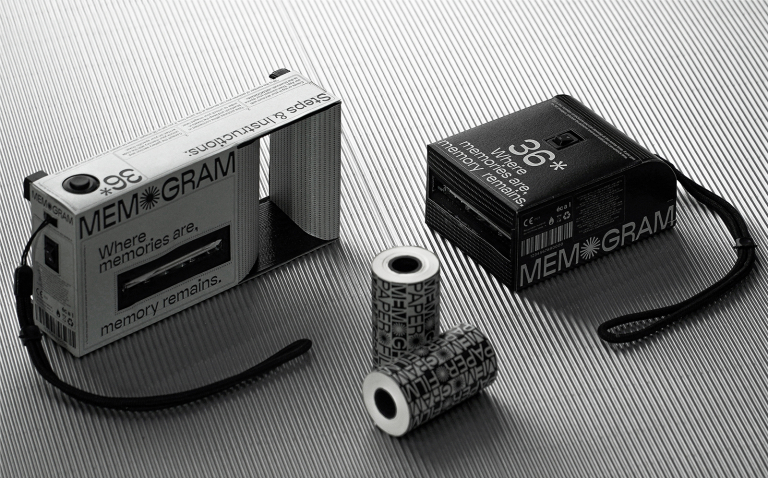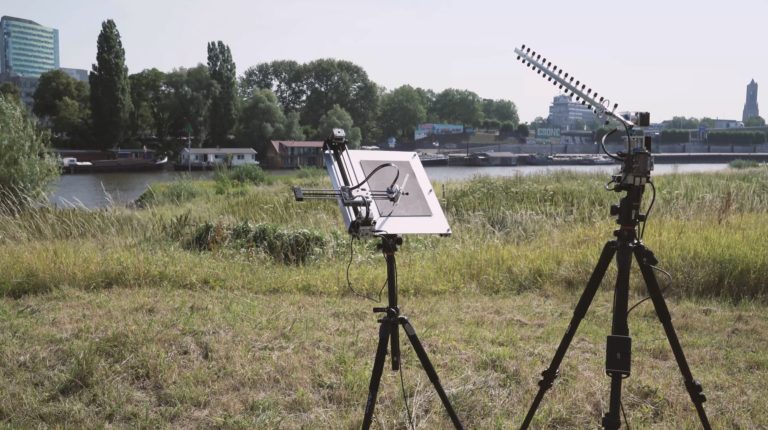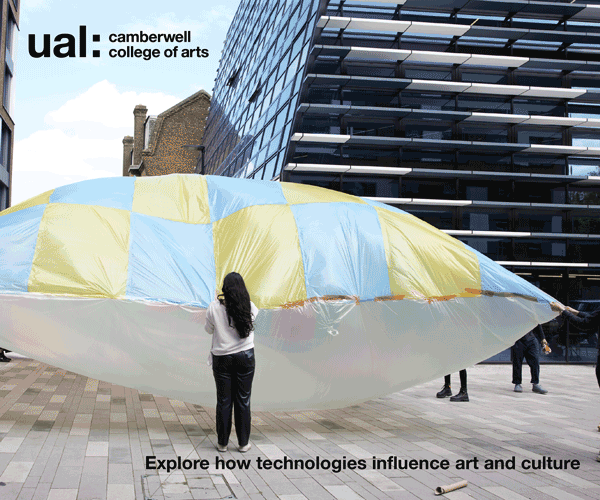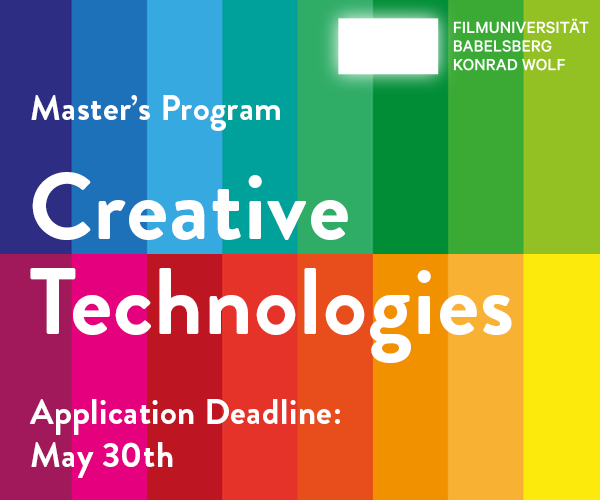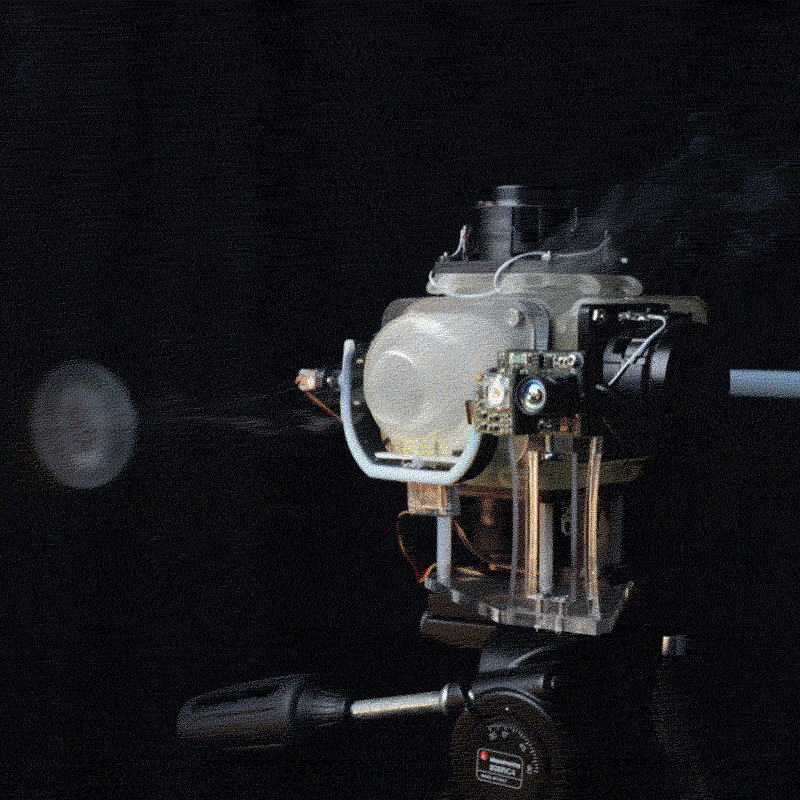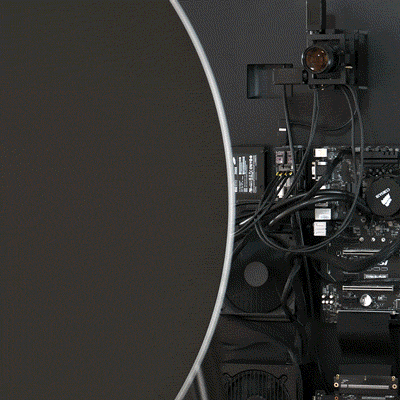Created by Richard Vijgen, The Case for a Small Language Model is a speculative AI installation inspired by the work of Dutch composer and poet Rozalie Hirs. Her 2021 poetry book Oneindige Zin (which can be read as Infinite Sense or Endless Sentence in Dutch) can be read as one never ending sentence. The installation shows the entire book printed on five 30 meter long strips of labelprinter paper that scroll in both directions As the five lines move back and forth, a vertical reading allows for new combinations to emerge.
When a language model produces a sentence it presents us a statistical probability based on countless texts it has analysed. Before it is able to predict the next character in a sentence it has to cut the writings of millions of authors into fragments to analyse the sequence of characters. They are stripped of meaning and structure and repurposed as a statistical resource. While the system needs the author’s work as input, the results can never be traced back. But what would happen when a language model creates new texts while leaving the original work intact? What if generative AI can be traced back to and understood in the context of the original text?
Richard Vijgen
A neural network based on Andrej Karpathy’s Char-RNN analyses a digital copy of Hirs’ original text and tries to create new sentences based on her work. Initially the combinations seem random and nonsensical but as the training of the neural network (running on a low power Raspberry Pi) progresses, more interesting combinations emerge. Rather than appropriating the the authors work as mere statistical data and cutting it into fragments, the system leaves the original text intact. It’s output can only be read and understood in the context of the input, as the only way to display it is to move the entire manuscript text left or right.
The Case for a Small Language Network reflects on the role of authorship in generative AI and questions the practice of reducing the written expressions of millions of authors, (mostly without their permission) into a statistical resource.
The installation uses Brother DK labelwriter paper, 10 stepper motors, custom hardware, 1 Raspberry Pi, 4 Teensy‘s, Char RNN, python and poetry.
Created in collaboration with Rozalie Hirs and Jelle Reith, supported by The Creative Industries Fund NL Text: oneindige zin (Querido 2021) Rozalie Hirs.
